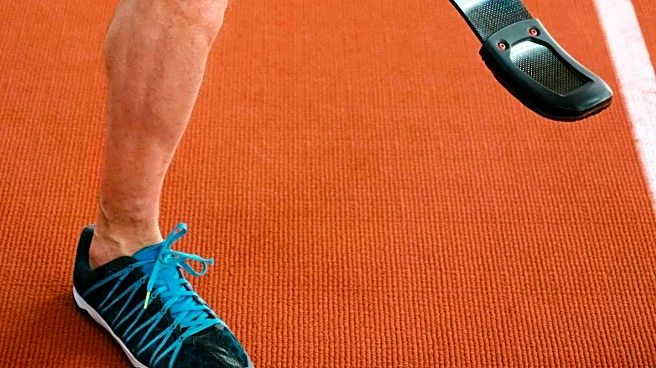What's Happening?
A recent study has explored the biomechanical mechanisms behind the reduction of knee adduction moment (KAM) in medial knee thrust gait. The research, conducted in a motion laboratory, involved participants walking along a path while wearing motion capture
suits. The study found that both peaks of KAM were reduced through knee-thrust, with the primary factor being the lateral deviation of the center of pressure (COP) relative to the knee joint center (KJC). This lateral shift of COP was identified as a key biomechanical target for reducing KAM, offering potential strategies for gait modification to slow the progression of osteoarthritis (OA). The study highlights the importance of understanding lower-limb posture changes in reducing KAM.
Why It's Important?
The findings of this study are significant for developing effective gait modification strategies, particularly for individuals with medial knee osteoarthritis. By identifying the lateral shift of COP as a key factor in reducing KAM, the study provides a foundation for personalized rehabilitation programs. This could lead to improved patient outcomes by slowing the progression of OA and enhancing quality of life. The research also offers insights into optimizing other gait modification strategies, potentially benefiting a wide range of patients with knee-related issues.
What's Next?
Further research is needed to validate these findings in patient populations, as the current study was conducted with healthy adults. Future studies should explore the impact of knee-thrust gait on knee flexion moments and examine biomechanical interactions across the entire body. This could lead to more comprehensive rehabilitation strategies and improve patient compliance with gait modifications.
Beyond the Headlines
The study's insights into the biomechanical factors affecting KAM could influence the development of new therapeutic approaches for knee osteoarthritis. By focusing on modifiable gait parameters, healthcare providers may be able to offer more effective interventions that are tailored to individual patient needs.













